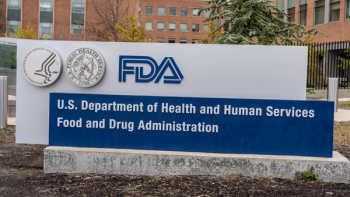
The Orphan Drug Act at 30 Years: What's Next?
30 years ago last week, the US Orphan Drug Act came into being, and with it, a door of possibilities opened up for patients with literally thousands of untreated diseases.
30 years ago last week, the US Orphan Drug Act came into being, and with it, a door of possibilities opened up for patients with literally thousands of untreated diseases. The anniversary marks the beginning of a journey where medicines for rare diseases have gained a foothold in the portfolios of drug companies large and small, largely because of the Act’s rich array of incentives that finally made it worthwhile to invest real money.
Signed into law by President Ronald Reagan on January 4th, 1983, the ODA gave orphan status to drugs for diseases affecting less than 200,000 American citizens. The law granted seven-year patent exclusivity, tax credits equivalent to one half of the development cost (later modified to a fifteen-year carry-forward provision and a three-year carry-back that can be applied in any profitable year), direct grants, FDA fast-track approvals, and expanded access to patients under the Agency’s Investigational New Drug Program. The law was also later amended to waive FDA user fees established under PDUFA.
Prior to passage of the ODA, only 38 drugs had been approved for rare diseases. Since then, 420 orphan drugs have been approved to treat 2,730 orphan designations. Nine percent of the drugs approved for orphan diseases have subsequently gained blockbuster status, including top-selling drugs such as Abilify, Provigil, and Cialis.
While the act failed to immediately entice big pharma into the orphan space, “the real explosion started about four years ago, and the pace seems to be accelerating,” says Mary Dunkle, VP of Communications for the National Organization for Rare Disorders, or NORD. Of utmost importance to the industry, as time has proved is the seven-year exclusivity provision granted to orphan drugs.
Applications for orphan drugs have indeed shot up in the past few years. Jim Ajer, Senior Vice President and Chief Commercial Officer at BioMarin Pharmaceutical Inc., notes that “The industry has gotten better at not only developing drugs for orphan disorders but also commercializing and making them available to treat patients.” Ajer expects this upward trend to continue, citing one third of FDA approvals in 2012 were for orphan designations, including Kalydeco for cystic fibrosis, Elelyso for Gaucher’s disease, Bosulif for chronic myelogenous leukemia, and Signifor for Cushing’s disease.
Since the ODA, the FDA Safety and Innovation Act (FDASIA) has been hailed as another score for orphan drugs. Signed in July 2012 by President Obama, FDASIA expanded the accelerated approval pathway and increased FDA’s communication with rare disease medical experts as well as giving patients a real seat at the registration table. “This gives patients the opportunity to have direct, on the spot input on things like risk benefit, which people with rare diseases see in a very different way than people with more common diseases and more available treatment pathways,” Dunkle adds.
In 2013, NORD will be working to ensure that FDASIA is implemented on schedule particularly in light of possible sequestration challenges and related budgetary uncertainties. NORD also plans to focus on medical foods (specifically, authorizing patient reimbursement for these, currently withheld for many rare disease patients), implementation of the insurance reforms in the Affordable Care Act, and reauthorization of the Newborn Screening Act.
Going forward, Ajer suggests, “It’s worth considering policy discussions to see if there are additional provisions that should be applied for drugs that treat ultra-orphan disorders.” As drug companies go after smaller patient populations to develop new drugs for this category (which BioMarin defines as 1-3,000 people worldwide), legislation to push incentives further down the development chain against most complex and smallest base diseases, is the next step.
Newsletter
Lead with insight with the Pharmaceutical Executive newsletter, featuring strategic analysis, leadership trends, and market intelligence for biopharma decision-makers.





